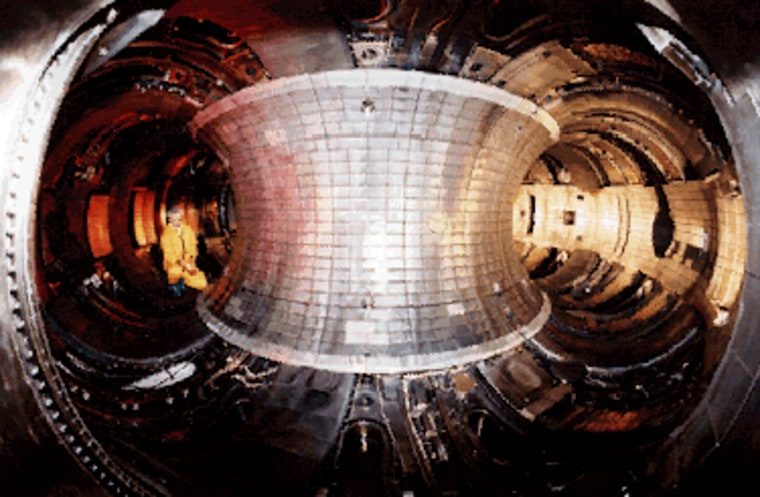Nations representing half the world’s population signed a long-awaited, $12.8 billion pact Tuesday for a nuclear fusion reactor that could revolutionize global energy use for future generations.
The ITER project by the United States, the European Union, China, India, Russia, Japan and South Korea will attempt to combat global warming by harnessing the fusion that runs the sun, creating an alternative to polluting fossil fuels.
But the project is still only experimental and will take decades to get going — and environmental groups say it may not even work.
French President Jacques Chirac, who hosted the signing at the Elysee Palace in Paris, praised the attempt to “tame solar fire to meet the challenge of ecological energy.”
“The growing shortage of resources and the battle against global warming demand a revolution in our ways of production and consumption,” Chirac said. “We have the duty to start research that will prepare energy solutions for our descendants.”
Raymond Orbach of the U.S. Department of Energy said, “This energy represents the hope of the world.”
Fusion reproduces the sun’s power source and produces no greenhouse gas emissions and only low levels of radioactive waste.
Demonstration target: 2040
The International Thermonuclear Experimental Reactor will be built in Cadarache in the southern French region of Provence. It is expected to create about 10,000 jobs and take about eight years to build.
Some 400 scientists from around the world would operate the reactor, and officials hope to set up a demonstration power plant in Cadarache around 2040. If it works, only then could the energy be made commercially available.
Officials involved in the project say 10 percent to 20 percent of the world’s energy could come from fusion by the end of the century.
The EU will pay 50 percent of the cost to build the experimental reactor, with the six other parties contributing 10 percent each.
Fusion, which powers the sun and stars, involves colliding atoms at extremely high temperatures and pressure inside a reactor. When the atoms fuse into a plasma they release energy that can be harnessed to generate electricity.
While fossil fuels will run short, the reactor would run on an isotope of hydrogen, a virtually boundless source of fuel that can be extracted from water.
Its backers say one quart of sea water would be able to generate energy equivalent to a quart of oil or two pounds of coal.
While Chirac praised the international cooperation that led to the project, it has faced multiple delays because of internal disagreements — over the choice of the site, financing and reactor design.
U.S. withdrew, rejoined
At one point, the United States withdrew, leaving scientists warning that the country would eventually have to buy the technology from other nations. The United States announced in January 2003 that it was rejoining the project.
Japanese Foreign Minister Takeshi Iwaya acknowledged Tuesday that it was a “difficult decision” for Japan to abandon its hopes for housing the reactor. The project’s director will be Japanese, however, and Japan will supply the reactor’s most complex parts.
The seven partners agreed last year to build the reactor at Cadarache, which already houses one of the biggest civil nuclear research centers in Europe, and initialed the ITER plan in May.
Each partner must still ratify the deal. French anti-nuclear group Sortir du Nucleaire predicted in a statement Tuesday that the United States could resist, given its refusal to ratify the Kyoto Protocol on fighting global warming.
The group also warned that the project will still produce radioactive waste, though less than conventional nuclear reactors.
Environmental activists, who generally oppose nuclear power, have argued that the project is too costly and would divert attention from current efforts to fight global warming.
